
Whatsapp Us

Whatsapp Us
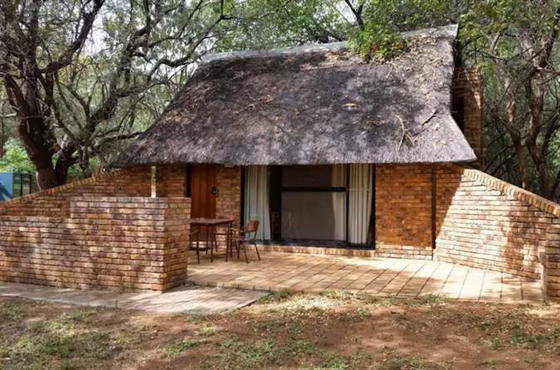
Berg-en-Dal Rest Camp is one of the main camps in Kruger and is located within the rocky hills of the southwestern part of the park. The name of the camp means “mountain and dale”, which is descriptive of the setting of the camp. Situated on the mostly dry riverbed of the Matjulu Spruit and with a dam bordering the camp, spectacular opportunities for wildlife viewing and bird watching are provided.
The typically African thatched-roof buildings are set within the natural bush and the indigenous gardens offer an extension of the natural habitat for birds, insects and smaller wildlife. Outside the camp, the rocky terrain allows for excellent game viewing and a high chance of seeing the Big 5. Leopards are regularly seen in the hills and wild dogs are also found in the area.
Rates are per night and exclude 1% community fund which will be added when booking.
| Accommodation Type | Base Guests | Base Rate | Additional Adults |
|---|---|---|---|
| Camp Site (CK6P) With Powerpoint |
2 | R 390 | R 123 |
| Accommodation Type | Base Guests | Base Rate | Additional Adults |
|---|---|---|---|
| Bungalow (BA3) Kitchenette |
2 | R 1,993 | R 356 |
| Bungalow (BA3U / BA3UZ) Kitchenette, Perimeter |
2 | R 2,195 | R 356 |
| Family Cottage (FA6 / FA6C / FA6ZB / FA6ZS) WC & Shower or Bath |
4 | R 3,738 | R 641 |
| J le Roux Guest House (GH6D) | 6 | R 8,092 | N/A |
| Rhino Guest House (GH8B) | 8 | R 9,694 | N/A |
| Accommodation Type | Base Guests | Base Rate | Additional Adults |
|---|---|---|---|
| Camp Site (CK6P) With Powerpoint |
2 | R 509 | R 123 |
| Accommodation Type | Base Guests | Base Rate | Additional Adults |
|---|---|---|---|
| Bungalow (BA3) Kitchenette |
2 | R 1,993 | R 356 |
| Bungalow (BA3U / BA3UZ) Kitchenette, Perimeter |
2 | R 2,162 | R 356 |
| Family Cottage (FA6 / FA6C / FA6ZB / FA6ZS) WC & Shower or Bath |
4 | R 3,741 | R 641 |
| J le Roux Guest House (GH6D) | 6 | R 8,100 | N/A |
| Rhino Guest House (GH8B) | 8 | R 9,703 | N/A |
| Accommodation Type | Base Guests | Base Rate | Additional Adults |
|---|---|---|---|
| Camp Site (CK6P) With Powerpoint |
2 | R 390 | R 123 |
| Accommodation Type | Base Guests | Base Rate | Additional Adults |
|---|---|---|---|
| Bungalow (BA3) Kitchenette |
2 | R 1,709 | R 356 |
| Bungalow (BA3U / BA3UZ) Kitchenette, Perimeter |
2 | R 1,815 | R 356 |
| Family Cottage (FA6 / FA6C / FA6ZB / FA6ZS) WC & Shower or Bath |
4 | R 3,073 | R 641 |
| J le Roux Guest House (GH6D) | 6 | R 7,273 | N/A |
| Rhino Guest House (GH8B) | 8 | R 8,875 | N/A |
Special care has been taken to preserve the natural vegetation in the camp and guests can enjoy walks through the indigenous gardens. A variety of Bungalows and Family Cottages offer self-catering accommodation, and the camping ground has 72 sites for tents and caravans. The two Guest Houses are fully equipped for self-catering accommodation and accommodate friends or family visiting the Park as a group.
The 72 campsites are spacious and located on the western side of the camp, offering beautiful views of the sunset over the rocky mountains surrounding Berg-en-Dal. The communal ablution facilities are neat and kept clean and there are wash-up and laundry facilities available. Cooking facilities with electric hotplates and 24-hour boiling water is provided.
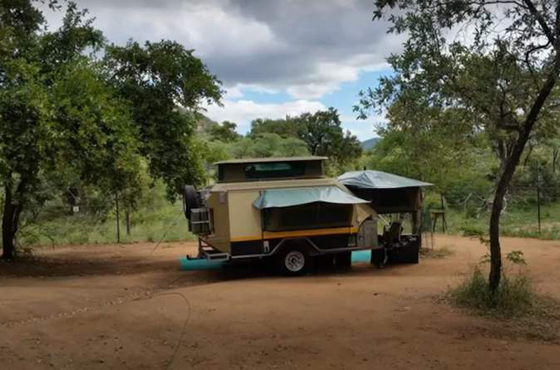
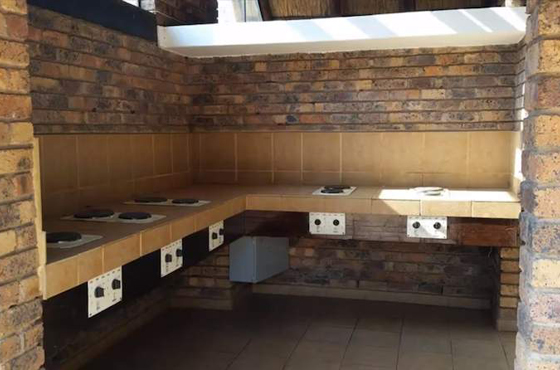
Furnished with either 2 or 3 single beds, with bedding supplied, these self-catering units are the most affordable for guests who don’t camp. The en-suite bathroom has a shower, toilet and basin and towels are supplied.
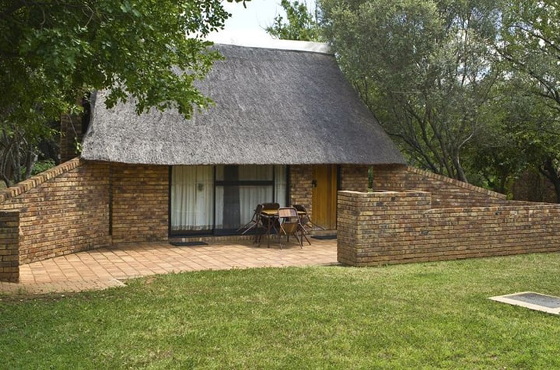
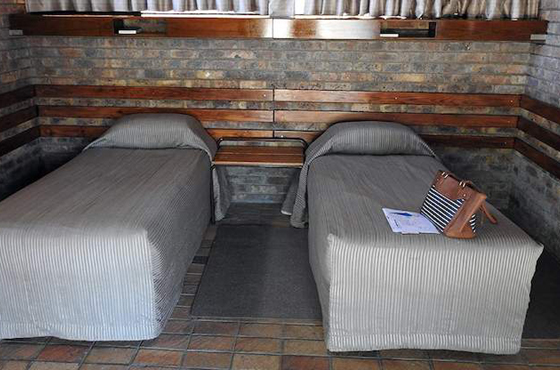
The bedrooms are air-conditioned and the bathroom is private and has a toilet, basin and a shower and/or bath. The open plan kitchen is equipped with a fridge, microwave, hotplate and the crockery, cutlery, utensils and cookware needed for meal preparation. The patio is furnished with outdoor furniture and there are barbecue facilities.
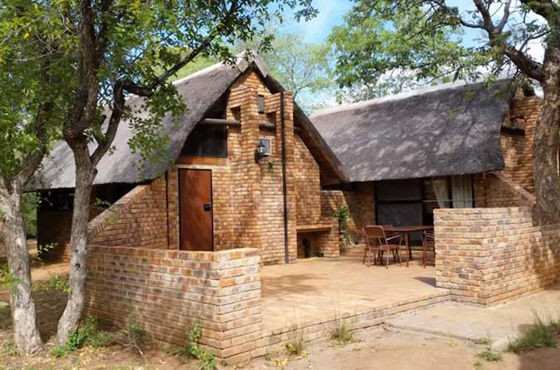
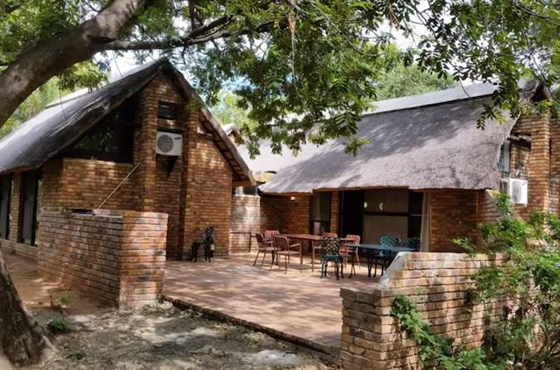
The J le Roux Guest House can accommodate up to 6 persons while the Rhino Guest House accommodates up to 8 persons. The bedrooms are air-conditioned and the kitchens are fully equipped for food preparation. Each Guest House has a private veranda and barbecue facilities.
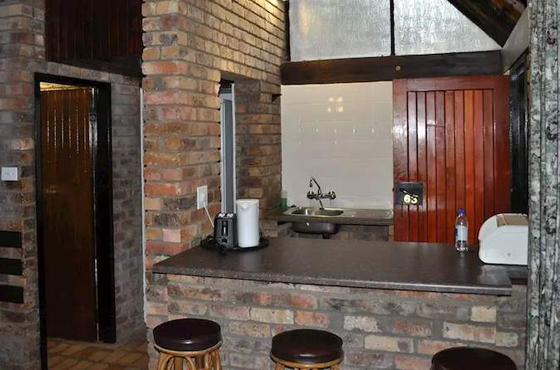
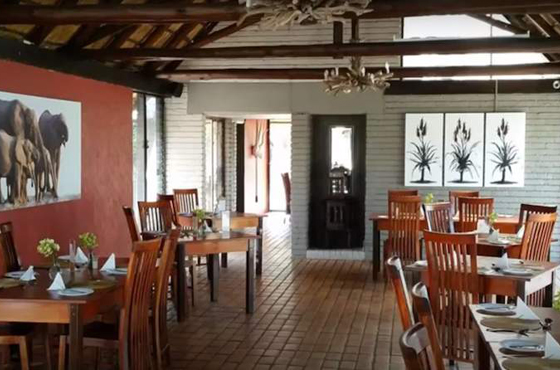
Berg-en-Dal is located only 12 kilometres from Malelane Gate, but because it is surrounded by the mountains, it has the typical atmosphere of remoteness and being in wild Africa.
The Kruger Mpumalanga International Airport is located near Nelspruit, which is less than 100 km from Berg-en-Dal. Frequently scheduled flights are available between KMIA and OR Tambo Airport in Johannesburg and less frequent flights can be taken to Cape Town or Durban.
Day visitors are welcomed at Berg-en-Dal camp and a designated picnic and barbecue area is available for these purposes.
Several activities are offered at Berg-en-Dal Camp, where other activities are available from rest camps in the area.
Well over 255 recorded archaeological sites - ranging from early Stone Age, roughly 1 million years ago, to various Iron Age settlements and recent historical buildings - hold cultural and spiritual importance, while others reveal an exciting and romantic history of the area. Paintings done by the San who lived and hunted in this area long ago, can be seen in the surrounding hill shelters along the Bushman Trail.
There are 336 tree species in the park of which 17 are protected trees.
With an estimated 1500 lions, 17 000 elephants, 48 000 buffalo, 1 000 leopards and just over 2 000 rhinos inhabiting the Kruger National Park, sighting the “Big Five” is very possible when doing game drives. Even though it should not be a prerequisite on a safari and sightings of specific animals absolutely happen on the luck of the draw, these animals are a huge attraction to visitors.
Kruger is one of the premier game-watching destinations in the world. Approximately 147 mammal species occur in the park. It is possible to see all the classical African big game, including elephant, black and white rhino, hippopotamus, giraffe, zebra, buffalo, warthog and many antelope species. Large carnivores include lion, leopard, cheetah, wild dog and spotted hyena. There are also many smaller mammals which are equally enticing.
Something else that became an attraction to wildlife viewing, is a group of insects known as the “Small Five”. This group includes the Elephant Shrew, Ant Lion, Rhinoceros Beetle, Buffalo Weaver and Leopard Tortoise. Kruger National Park also supports packs of the endangered African wild dog, of which there are thought to be only about 400 left in the whole of South Africa.
More than 500 different bird species have a home in Kruger National Park, some of them not to be found anywhere else in South Africa. Numerous water points make for excellent birdwatching, while there are eleven bird/game-viewing hides in some of the camps and picnic sites in the park.
The Kruger Park is inhabited by 114 species of reptiles, including black mambas, African rock pythons, and 3,000 Nile crocodiles 34 species of amphibians are found in the park, as well as 49 fish species. A Zambezi shark, Carcharhinus leucas, also known as the bull shark, was caught at the confluence of the Limpopo and Luvuvhu Rivers in July 1950. Zambezi sharks tolerate fresh water and can travel far up rivers like the Limpopo.
219 species of butterfly and skipper are native to the park. The fastest and most robust of these belong to the genus Charaxes, of which 12 species have been recorded. Genera Papilio and Acraea are also well-represented, with about 10 and 15 species respectively. The total number of Lepidoptera species in the park is unknown but could be in the order of 7,000, many of which range widely in African savanna.